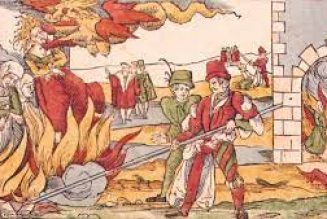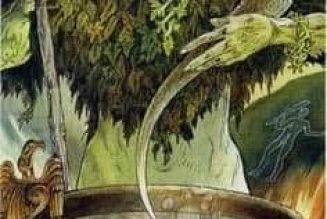Today, most people look at Ouija boards and think, “Why would you want to open the gates of Hell?” It wasn’t always that way, however. The Ouija board came straight out of the “Spiritualism” movement, which was the belief that the dead were able to communicate with the living. Spiritualism had been popular for years in Europe, but it hit America in 1848 with the Fox sisters from upstate New York. The Foxes claimed to receive messages from spirits who would rap on walls to answer questions. Séance parties were all the rage in a time when people were desperate to connect with loved ones. Spiritualism offered solace in an era when the average lifespan was less than fifty years. Women died in childbirth, children died of disease, and men died in war. Spiritualism hit a fevered pitch during the Civil War with people desperate to connect with loved ones who had gone away to war and had never come home. Communicating with the dead was common then. It wasn’t seen as weird or strange. The Ouija board was not unlike a telegraph for the dead! After all, reciting the alphabet and waiting for a rap on a wall was boring and time-consuming. The Ouija board was fast as lightening compared to previous methods. The Kennard Novelty Company saw this and capitalized on it! In Ohio, the Spiritualists were using talking boards, or spirt boards. Kennard brought together investors and began to mass-produce Ouija boards after gaining a patent. Strangely enough, Kennard couldn’t gain a patent unless they could prove the board worked. The chief patent officer demanded a demonstration. If the board couldn’t accurately spell out his name, which was supposed to be unknown to the two patent seekers, he would allow the patent application to proceed. They all sat down together and the board accurately spelled out the patent officer’s name. On February 10, 1891, a white-faced and visibly shaken patent officer awarded Kennard a patent for his new game. Yes, I said “game” because that is how it was marketed. The first patent offers no explanation as to how the board worked, only that it did. This of course, made the board seem mysterious, and the more mysterious it seemed, the more people wanted to buy it. It made money, they really didn’t care why people thought it worked—they were in it for the money! They had found a niche and filled it with Ouija! It was marketed as both a mystical oracle and family entertainment! The only people who didn’t like the Ouija board were spirit mediums because their job as the middleman between the living and the dead was suddenly obsolete. The Ouija board offered a fun way for people to believe in something. People want to believe. Ouija is one of those things that lets them express that belief. The board found its greatest popularity in uncertain times when people look for answers from nearly anywhere, especially cheap, manufactured oracles. During WWI it had a surge in popularity, and again during prohibition. It was so “normal” that in May of 1920 Norman Rockwell painted a Saturday Evening Post cover of a man and women with an Ouija board on their knees, blissfully communing with the other side. During the Great Depression, there was another surge in popularity and the production company opened new factories. This is outstanding because during that time most other factories were shutting their doors. In 1944, a single New York department store sold 50,000 Ouija boards! Parker Brothers bought the game in 1966, and in 1967 there was another surge in popularity – over 2 million boards were sold with American troops in Viet Nam, and race riots in Newark, Detroit, Minneapolis, and Milwaukee. Not just historical events prompted these amazing sales, but strange tales connected with the boards also made them more mysterious and more desirable. It was always popular, mysterious, and interesting…. until 1973 when The Exorcist debuted in theaters. Almost overnight, Ouija became a tool of the devil, a tool of horror writers and moviemakers. During the time The Exorcist rode the theater marquees, religious groups denounced Ouija as being Satan’s preferred method of communication! Even with the paranormal community, Ouija gained a rather dodgy reputation. In recent years, Ouija is popular again, in part by the crappy economy and its popping up as a plot device in multiple paranormal reality television shows. So how DOES the Ouija board work? Experiments have been conducted, and the answer is disappointing. WE ourselves make it work. If Ouija can’t give us answers from the great beyond, what CAN it tell us? Apparently, Ouija can tell us quite a bit! In the experiments, people answered better with Ouija on questions they really didn’t think they knew, but something inside them DID know, and the Ouija board can help the person answer correctly above that of mere chance. These types of questions include what the subconscious mind knows, how fast it can learn, how it remembers, even how the brain amuses itself! As it turns out, Ouija does offer a link between the known and unknown, just not the unknown everyone wanted to believe, according to scientifically conducted experimentation.
OUIJA
187 views








